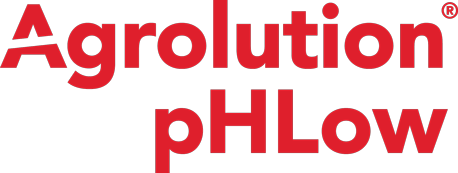How Can US Farmers Prepare for Drought
If drought becomes the ‘new normal’, what can farmers do to maintain both yields and quality?
Few of our farmers will need reminding that hot and dry weather dominated headlines during the summers of 2022 and 2023. Forbes reported that nearly three-quarters of farmers saw a reduction in harvest yields due to drought with 37% reporting lack of water was forcing them to till over fields that were not producing.
Despite the driest conditions in recent years, American producers have shown resilience with high-yielding harvests.
But, if drought becomes the ‘new normal’, what can its farmers do to try to maintain yields and quality, as well as peace of mind?
Reduce Plant Stress
Farmers can greatly enhance their crop resilience against drought stress by taking proactive measures. Drought stress is a significant abiotic factor. When a plant experiences environmental stress, it uses various mechanisms to mitigate the effect. For example, it will decrease its transpiration rate and close the stomata, the tiny pores on the leaf. But while this does reduce water loss and maintain plant turgidity, there’s a knock-on effect: a marked decrease in the uptake and movement of plant nutrients, impeding plant growth and curtailing crop productivity.
Irrigation, of course, should prevent crops from reaching a state of drought stress. For farmers who have to reduce their irrigation frequencies or volumes, soil surfactants can help irrigation water go further, but often a multi-pronged approach is required.
Use Optimal Fertilization
For farmers where irrigation and fertigation are limited or not possible, foliar fertilization can be used to complement regular fertilization and help plants cope with drought. Let’s look at how the components of NPK fertilizers benefit plants and how complementary foliar fertilizers can be beneficial in a drought situation.
Phosphorus (P)
Research shows that under water-limited conditions, P enhances early root growth, better equipping plants to withstand drought. Phosphorus has also been shown to improve water-use efficiency in wheat plants exposed to mild water deficit. But P needs plentiful moisture in the soil if it is to be absorbed in usable quantities by crop roots, so when soil is moisture-deficient, P uptake from the soil decreases. Foliar application of P provides an effective alternative method for P uptake.
Potassium (K)
Potassium increases both root weight and length. A high root density is critical for water extraction from deeper in the soil profile, while better root structures within the soil also help reduce moisture loss in general. Meanwhile, in the leaf, high potassium concentrations help maintain leaf turgor; the nutrient also plays a significant role in the opening and closing of leaf stomata and the photosynthetic rate.
Nitrogen (N)
Then there’s nitrogen. Foliar-applied nitrogen increases the photosynthetic rate in crops, including corn and wheat, under water-stress conditions. It also increases cell numbers and their size while increasing photosynthetic efficiency.
Managing Farmers’ Stress
It’s important to note that studies show that drought conditions don’t just have an impact on yield. They have a major impact on job-related stress for farmers. While farm life has always been stressful, the demands placed on producers today are extraordinary, impacted by extreme weather, fluctuating prices, labour shortages, and other critical factors. Just like proactively addressing plant stress response is integral to drought response and recovery, so is attending to job-related drought stress. The USDA has compiled a list of farmer stress resources that includes: Farm Aid’s Farmer Hotline: 1-800-FARM-AID (1-800-327-6243) available Monday through Friday from 9 am to 10 pm ET / 6 am to 7 pm PT. The fact is, a healthy prosperous farm starts with a healthy farmer. See the full list of resources here
Bottom Line: There are Tools to Help Mitigate the Impact of Drought
Responding to drought isn’t a one size fits all approach, and there are different tools farmers can implement to proactively address the impact. Maintaining healthy soil structure and an active microbiome, cover cropping, implementing drip irrigation and fertigation practices, and using drought-resistant seeds can all proactively mitigate plant stress.
In addition, optimizing fertilization and integrating both foliar and fertigation fertilizers such as ICL’s Nova or Agrolution pHLow product lines, or using H2Flo soil surfactant to complement conventional fertilization and irrigation practices. Additionally, biostimulants like ICL’s BIOZ Diamond* can be valuable in helping crop establishment and the development of deeper root systems, which can help crops to make the best use of the limited soil moisture. The farming community is both resilient and collaborative, and at the end of the day, we have tools to proactively address some of the impact of drought on both crops and growers.
*expected US availability 2024






